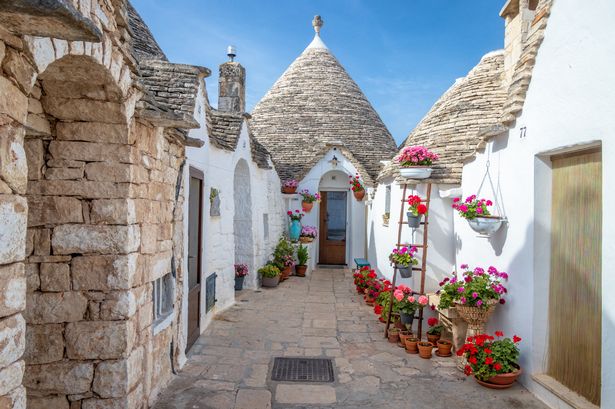This quaint town in the Istria Valley is one of only a few in the region that preserved their traditional dry stone huts. Today, travellers are welcome to stay overnight in one of these famous gems
You may have seen images of trulli—traditional dry stone huts with corbelled, conical roofs—but there are only a few towns where you can see them in-person. These unique architectural gems are found primarily in the Itria Valley of Puglia in southern Italy and were constructed from limestone to serve as temporary field shelters and homes for agricultural labourers.
Communities of trulli can be found in a handful of places in the Itria Valley in the towns of Locorotondo, Cisternino, Martina Franca and Alberobello. The trulli of Alberobello are some of the best preserved, making the UNESCO World Heritage List in 1996.
Trulli line the streets of Alberobello, most predominantly in the Rione Monti quarter. This area of the Puglian town is packed with over 1,000 white-washed trulli which are used as residences and cafes for some of the 10,000 locals in the area.
READ MORE: Travel influencer criticised as she recommends ‘unspoilt’ Italian getaway
Travellers will feel transported to a different era—or perhaps a storybook realm—walking through between the narrow streets of these stone huts. Some sources indicate that the construction technique is a remnant of the Greek’s colonisation of southern Italy, modelled after ancient domed Greek funeral chambers.
For those wondering, yes, you can certainly book a stay in a trullo (singular of trulli). Don’t let the small sizes fool you, the hotel-converted trulli are incredibly impressive and fit with all the modern amenities including air conditioning and WIFI.
That said, there are plenty of other facets of Alberobello that deserve to be explored. Outside the larger Rione Monti quarter which is the main hub for tourists is the less commercialised area of Rione Aia Piccola. Here, travellers can still discover trulli in a more serene setting.
The trulli are not the only architectural gems in the Alberobello. The Church of Saint Anthoy of Padua is distinct for its Greek cross floor plan, frescoes and stone arches. The church is young by most standards, dating back to 1927, but its architecture draws inspiration from the surrounding trulli and it is the highest point in the Rione Monti quarter.
Travellers should be sure to pick up a few special souvenirs before heading home. The most common Alberobello tokens include intricate olive wood carvings, wood placemats and, of course, miniature versions of trulli.
Once you have had your fill of shopping and strolling, there are plenty of Puglian dishes to sample. The first delicacy travellers should keep an eye out for is a pasqualino —the distinctive sandwich of Alberobello.
The pasqualino is usually served on rosetta or turtle bread and is filled with the same ingredients in a very precise order: tuna fish, capers, salami and cheese. The sandwich first was invented in the 1960s by Pasquale Dell’Erba who owned a local grocery store and initially made the sandwich for a group of friends that would meet regularly outside his store.
Over the years, different variations of the pasqualino have emerged though the core ingredients remain the same. New variations of the local sandwich include pickles, mushrooms in oil and cubes of cold cuts.
For travellers really hoping to enjoy a greater breadth of Puglian cuisine, it may be worth taking the 16-minute drive to Noci. Here, there are a few more restaurant options where travellers can enjoy durum wheat pastas and fine selections of meat.
In the evenings you can stay in Noci or head back to Alberobello to enjoy some Italian wine at a rooftop bar and watch unusual street performances. The town can get quite busy with tourists, so consider strolling the town in the early morning to beat the worst of the foot traffic.
READ MORE: Shoppers say 30p collagen gummies make a ‘huge difference’ to hair, skin and joint health


